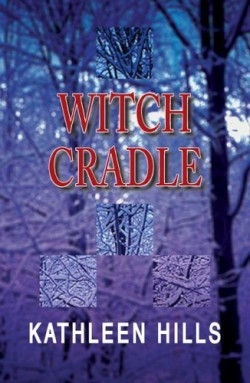
Witch Cradle
The year is 1951, at the height of the Korean Conflict, the McCarran Internal Security Act, and the McCarthy Hearings. John McIntire, Town Constable of St. Adele, Michigan wakes up to a freezing rain. The storm coats trees and power lines, uprooting two huge pines in their neighbor’s yard, forming a nest of roots called a “witch cradle” by the Finnish inhabitants of the town. As Constable, McIntire needs to go out and assess the damage to his area, but what he finds is a jar that had been buried since the 1930s, hidden until it was unearthed in the midst of the witch cradle. In that jar’s crumbled remains are what looks like a lading receipt, a passport, and a wallet with more than seven hundred dollars. Even in 1951 this amount was substantial; during the Depression, when the jar was hidden, it was a treasure.
Where is the owner of the passport, and why was it buried there? The mystery deepens when two bodies are found inside a well on a tract of land that was bought from a family in the 1930s, a married couple who were going to “the socialist paradise” in Russia. One of the bodies is identified as the woman who planned to sail off to Russia, but the man who shares her grave is not her husband.
With a murder to solve and his own past to hide, McIntire is drawn closer and closer into the madness of the “witch hunts” of the early 1950s. At a time when the threat of nuclear war spawned investigations that caused “thousands of people throughout the country” to “lose their jobs and their reputations,” even the stolid McIntire and his British wife become suspicious of each other.
It is no surprise that the author grew up in rural Minnesota. The harshness of winter in the Great Lakes region becomes an exquisitely drawn character in this mystery. Cars are forever stuck in the snow, and power lines are down. Its icy grip becomes a force so omnipresent that an investigator tells McIntire that his cigarette is “all that’s keeping my lungs from turning to icebergs.” Yet ice reveals what snow buries, and the witch cradle brings a crime that was hidden for nearly twenty years to the surface. In the end, no one is left untouched by the threads of murder and treason.
The author not only fashions a character out of the very landscape of Michigan, she deftly layers clues, embedding them in the people of small-town St. Adele. Even McIntire’s old teacher from grade school comes under suspicion, for handling a property transaction for the murdered woman, collecting rent while the woman was supposed to have been in Russia. Author of Past Imperfect and Hunter’s Dance, the author continues to craft mysteries that entice her readers into worlds with vivid yet all-too-familiar characters, people so expertly drawn that the reader almost expects them to walk in their front door at any moment, the kind of people who live just next door, people who couldn’t possibly be capable of murder. Or could they?
Reviewed by
Carol Lynn Stewart
Disclosure: This article is not an endorsement, but a review. The publisher of this book provided free copies of the book to have their book reviewed by a professional reviewer. No fee was paid by the publisher for this review. Foreword Reviews only recommends books that we love. Foreword Magazine, Inc. is disclosing this in accordance with the Federal Trade Commission’s 16 CFR, Part 255.
